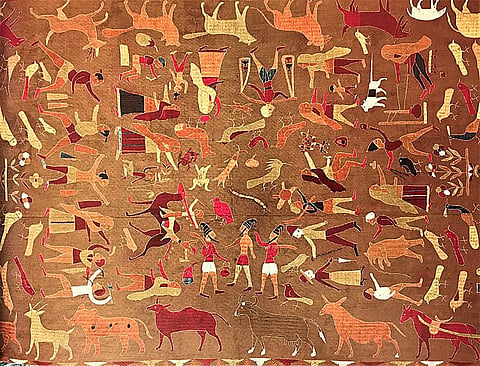
- Destinations
- Experiences
- Stay
- What's new
- Celebrating People
- Responsible Tourism
- CampaignsCampaigns
- SubscribeSubscribe
- Buy Now

Punjab's traditional arts and crafts industry has become a shadow of what it used to be due to the growth of industrial mills. However, its handcrafted textiles, leather products and carpets can still be found in pockets across the state.
While its toy market is flooded with Chinese-made goods, a simple wooden or tin-made toy tractor, car, aeroplane or bulldozer crafted by local artisans in Punjab's villages not only help to keep this industry alive, but also liven up your home with memories embedded in their material.
There was a time when Punjab's craftspeople were envied for their excellence in woodwork. Influenced by Kashmir, Afghanistan, Turkey and Iran, these artisans produced works of great beauty, and can still be seen in the pre-Partition houses of the state.
Today, ornamental furniture and wooden products are available in places such as Hoshiarpur, Jalandhar and Amritsar. The wood carving here is known for its geometric and floral patterns dating back to the Mughal era. Its inlay work can be seen on furniture, boxes, screens, bowls, cigarette cases and chess boards made of shisham or black wood. Hoshiarpur is also known for its delicate trellis woodwork and you can get them made to order.
Excavations date the earliest needle found in Punjab to the 2nd century BCE. No textile pieces have survived from this age but it is likely that people were quite deft with the needle. Phulkari ('flower work') started out as darning the back of a damask by either counting the thread or with the help of a thread line. Bagh Phulkari is a type of drape where the entire surface of the cloth is covered with ornamental designs connected to each other in a seamless pattern.
A phulkari where only the edges of the drape are covered with stylised motifs of flowers, fruits, beads or geometric designs is known as chope. It was a gift traditionally given to the bride by the older women of the house. Chope is usually stitched with silk or cotton threads.
The traditional combination of colours used to be gold, yellow and white or green embroidery on red or indigo-coloured cloth. Now, it is made in any colour combination one wants. Patiala, Ludhiana, Jalandhar and Amritsar are the places to shop for phulkari.
There is no home in Punjab that doesn't own a dhurrie – a loom woven thick cotton spread used as a bedcover or carpet. You can buy these in Jalandhar, Hoshiarpur, Tarn Taran Sahib and Anandpur Sahib during any festive season when artisans come to sell their wares.
Most of the carpets available in Punjab now are made by machine and their patterns are usually inspired by the Mughal era. But if you are interested in the real deal you can travel to the village of Rajasansi, not far from Amritsar airport, where you'll find the famous Bokhara-style handwoven carpets. Women here have kept the tradition of weaving carpets alive.
If you've ever had a lassi in a traditional mega-sized Punjabi brass tumbler, you would have perhaps noticed the delicate repoussé, piercings and metal engravings. Besides tumblers Punjab also makes decorated metal lampshades, metal doors and engraved panels – the kind that are seen in gurudwaras depicting famous battles from Sikh history.
The vibrant and colourful leather shoes of Punjab constitute a craft that is thriving even today. While most of the embroidery done on leatherette surfaces is executed by machines, if you want the real deal then choose pure leather juttis which have to be executed by hand. This is because the leather used for these type of shoes is too thick to stitch by commercial machines. The handcrafted shoes are usually decorated with silver or gold threads.
There are plenty of Punjabi cities which have domestic airports but only Amritsar and Chandigarh stations have international ones. There are around 90 railway stations in different districts of Punjab, and road travel via neighbouring states is also an option.
